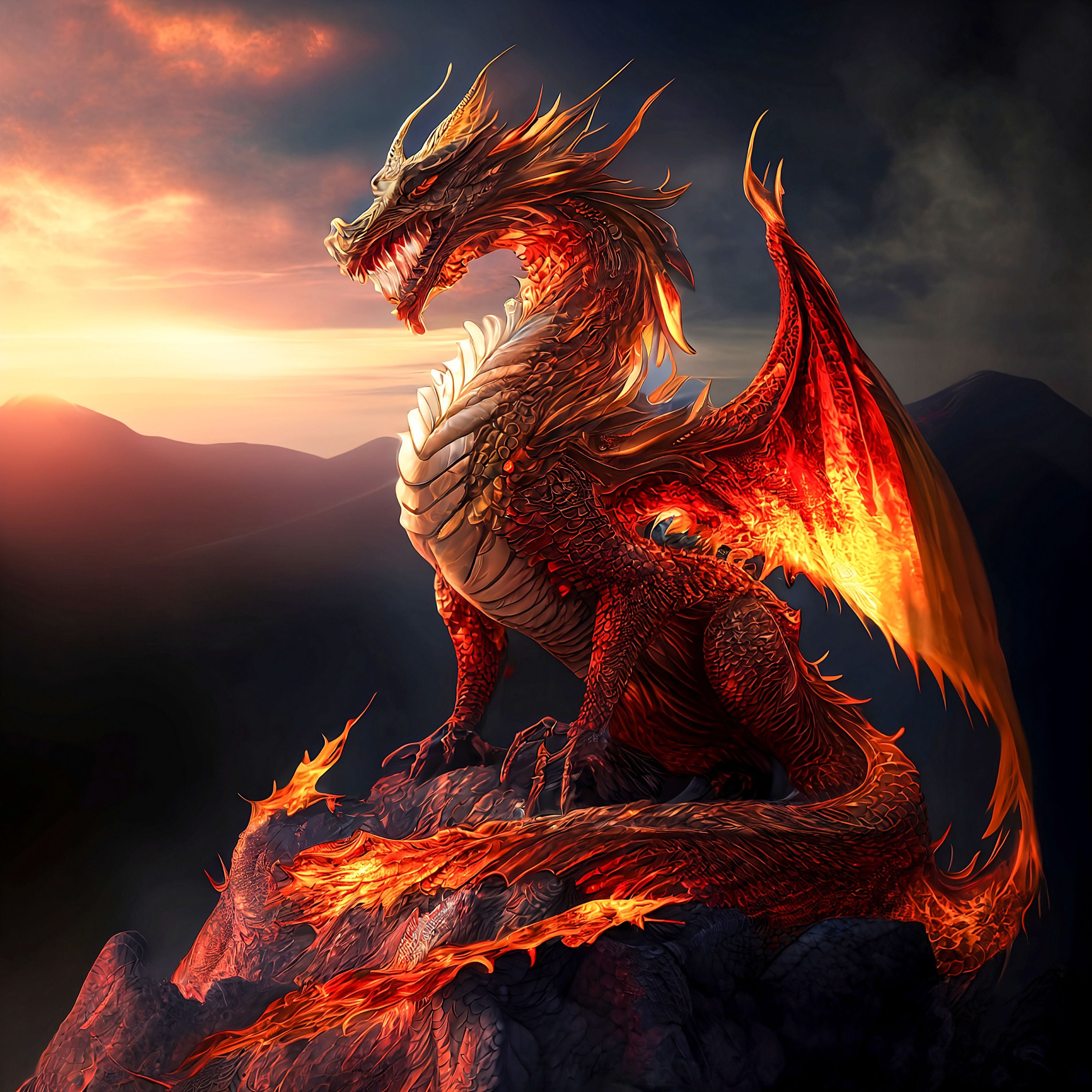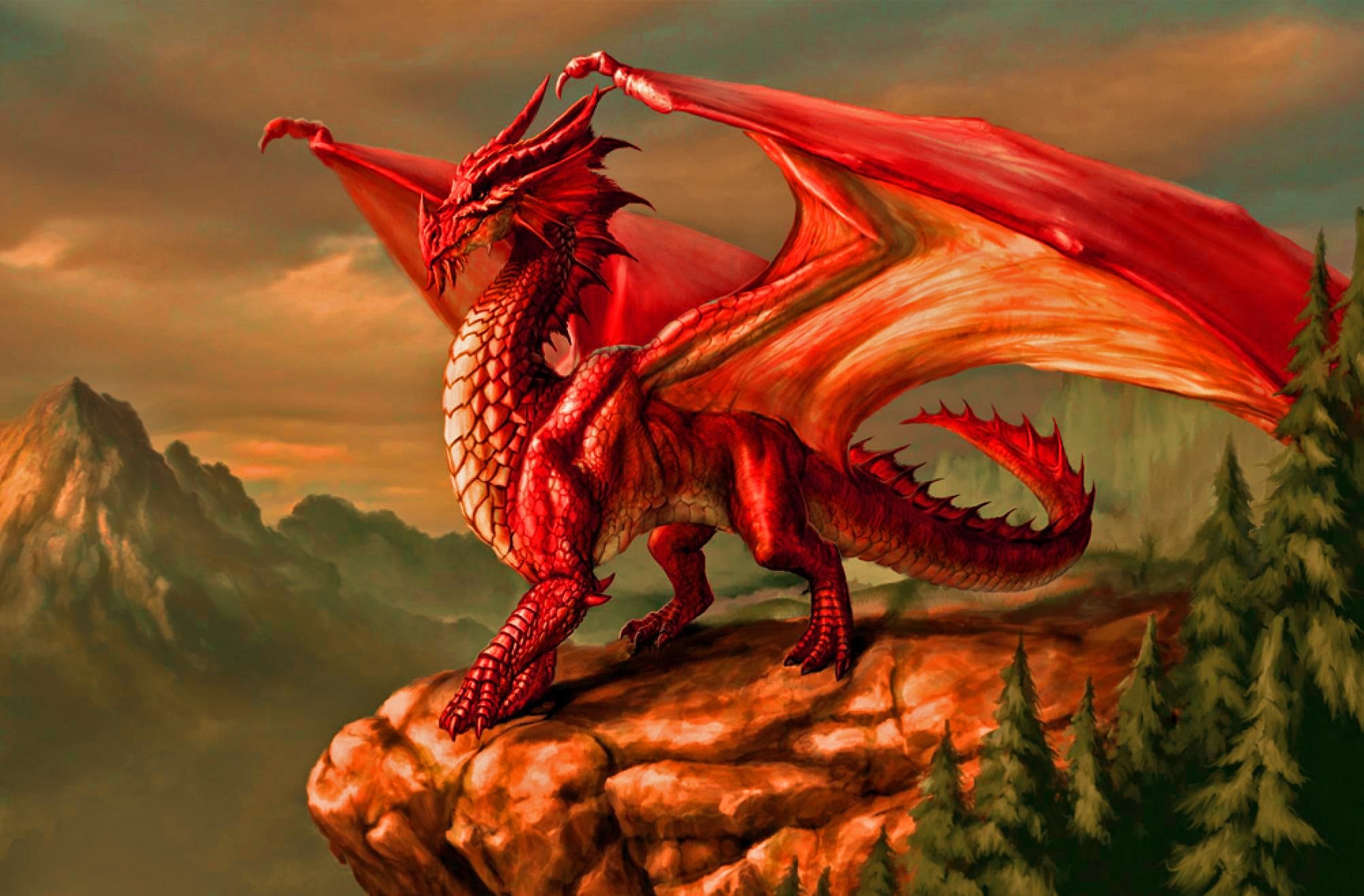The Shifting View Of Dragons - A Central Idea
When we think about powerful symbols, few hold as much sway as the dragon. For many, it conjures up images of fire-breathing creatures from tales of old, perhaps guarding a treasure hoard or challenging a brave knight. But what if the very word we use to describe this creature carries a different meaning depending on where you are in the world? It's a rather fascinating thought, isn't it, how a single word can represent such different ideas across cultures. This difference, so it seems, is at the heart of some interesting discussions about how we understand and talk about things from other parts of the globe.
This idea, you know, of how words get translated and what that means for cultural understanding, is pretty important. For a long time, the way we talked about the Chinese "Long" was through a word that, for many, brings to mind something quite different. It's like trying to fit a square peg into a round hole, or so it appears. The history of this particular translation, and how it came to be, really gives us a lot to think about when we consider how cultures interact and how language shapes our perceptions. It's a central idea in how we share stories and symbols.
So, what happens when a word, or a concept, doesn't quite line up between two different cultures? We see a kind of evolution in how people are trying to bridge that gap. There's a growing recognition, actually, that some things are just so unique to one culture that a direct word-for-word swap just doesn't do them justice. This conversation, with its focus on the "dragon i central" to many cultural narratives, is a pretty good example of that very thing, showing us how language is always adapting to better reflect the richness of human experience.
- Riley Green Political Party
- Qatar Airways Iran Flights
- Bonnie Blue 1000 People Video
- 69069 Text Message
- Morgan Wallen Setlist Miami
Table of Contents
- How Did the Chinese "Long" Become the Western "Dragon"?
- The Early Days of Dragon i Central Translation
- Why Is the Western Dragon Different from the Chinese "Long"?
- What Does a Western Dragon Look Like, Anyway?
- Are All Western Dragons the Same, with a Dragon i Central Image?
- What's Happening with the Translation of "Long" Now?
- How Are Companies Changing Their Dragon i Central Branding?
- Should We Change How We Talk About Chinese Dragons?
How Did the Chinese "Long" Become the Western "Dragon"?
It’s interesting to think about how words travel across the globe and pick up new meanings or sometimes, you know, get stuck with a meaning that wasn’t quite right to begin with. The story of how the Chinese "Long" became known as "dragon" in the English-speaking world is one of those tales, in a way. It goes back to a time when different cultures were just really starting to connect, and sometimes, those connections weren’t always as smooth as we might hope.
The Early Days of Dragon i Central Translation
Back during the Opium Wars, so it seems, there was a missionary from the West named Robert Morrison. He was one of the early folks who spent a lot of time trying to understand and translate Chinese ideas for people back home. When he came across the Chinese "Long," which is a very important symbol, he had to figure out how to explain it in English. He looked at the "Long" and, apparently, he thought it looked quite a bit like the "dragon" described in a very old book, the Book of Revelation from the Bible. Because of that, he decided to translate "Long" as "dragon." This decision, you could say, really set the stage for how this powerful creature would be talked about in English for a very long time, making the "dragon i central" to how many people thought of Chinese culture.
It’s a bit of a historical quirk, isn’t it, that a single person’s choice, based on a visual similarity, could have such a lasting impact on how a whole culture’s symbol is understood by another. This translation, in fact, was even part of academic papers written back then, which is pretty wild to think about. It just goes to show how much influence early translations can have, shaping perceptions for generations, and making the "dragon i central" to a discussion that continues even today.
- Desmond Doss The Unyielding Spirit Of A Conscientious Objector
- Ralph Macchio Net Worth
- Iran And Pakistan Map
- Unveiling The Charismatic Actor From Mad Men A Journey Through Talent And Fame
- Selena Quintanilla Outfits A Timeless Fashion Legacy
Why Is the Western Dragon Different from the Chinese "Long"?
Well, when you think about it, cultures develop their own stories and symbols for a reason. They grow out of unique experiences and beliefs. So, it’s not really surprising that a mythical creature in one part of the world might not be exactly the same as a similar-sounding creature in another. The Western dragon, for example, has a very different feel and meaning compared to the Chinese "Long," and that difference is actually pretty important.
What Does a Western Dragon Look Like, Anyway?
When people in the West talk about a "dragon," they’re usually picturing a specific kind of creature. This creature is, you know, a legend, often described as a huge reptile. It shows up in all sorts of places: in books, in paintings, and even on old buildings or monuments. These dragons are often seen as something to be feared, something that might hoard gold, or perhaps breathe fire. They are often portrayed as a kind of adversary, a challenge to be overcome, rather than a symbol of good fortune or power in the same way the "dragon i central" to Chinese thought is.
Are All Western Dragons the Same, with a Dragon i Central Image?
Interestingly, even within Western stories, there are different kinds of these creatures, too it's almost. For example, some stories talk about a "Wyvern," which is a type of winged creature that might have two legs instead of four. Then there are "drakes," which in some fantasy worlds, like a popular card game, are described as smaller dragons. And there are "wyrms," which are sometimes thought of as dragons that crawl on the ground and don’t breathe fire, like the "cold dragon" or "cold drake" mentioned in some famous fantasy books. So, while they all fall under the general idea of a "dragon," there are still distinctions, and none of them quite match the "dragon i central" to Chinese cultural identity.
It’s also worth noting that the word "dragonfly" for the insect, actually, gets its name from the Western idea of a dragon. This is because, apparently, people saw some kind of connection between the insect and the mythical creature, perhaps in their appearance or how they move. This just goes to show how deeply rooted the Western "dragon" image is in our everyday language and how it can influence even the names we give to ordinary things, making the "dragon i central" to more than just fantasy stories.
What's Happening with the Translation of "Long" Now?
So, with all these differences, there’s been a growing conversation about whether "dragon" is really the best word for the Chinese "Long." It’s a pretty big topic, actually, because it touches on how we respect and understand different cultures. For a while now, people have been thinking that maybe there’s a better way to do this.
In recent years, it seems, people who study cultures in the West have started to realize that Chinese cultural things are just very unique. They’ve found that it’s really hard to find a perfect match, a 100% equal word, between Chinese ideas and Western ideas. Because of this, the old way of just swapping a Chinese word for an existing Western word is slowly being set aside. There’s a growing trend, you know, to just use the Chinese pronunciation, or pinyin, directly. This way, the "dragon i central" to Chinese culture can keep its original sound and meaning.
How Are Companies Changing Their Dragon i Central Branding?
We can see this shift happening in some pretty big ways, too. For example, in 2023, a car company called BYD made an announcement that they were changing the English name for their design language. It used to be called "Dragon Face," but now it’s "Loong Face." This change, they said, isn’t just about how it sounds, though "Loong" is much closer to the Chinese pronunciation of "Long." It also shows that the company really wants to respect and carry on Chinese culture. This kind of move, where a major brand adjusts its "dragon i central" identity, really highlights the importance of getting these cultural translations right.
Should We Change How We Talk About Chinese Dragons?
Given all this, there’s a strong feeling among some people that we really should change how we translate the Chinese "Long." They think it shouldn’t be called "dragon" or even "Chinese dragon." There are other options being suggested, like "loong," "long," or "lung," which many people think are much better because they sound more like the original Chinese word. These alternatives, you know, help to show the unique qualities of the Chinese "Long" without confusing it with the Western mythical creature.
The challenge, of course, is that these newer translations aren’t yet the most common way people talk about it. So, the idea is to find ways to make these new words, like "loong," much more widely known and used. It’s about more than just a word; it’s about how we represent and understand a very important part of Chinese culture. This ongoing discussion around the "dragon i central" to Chinese identity is a good example of how language evolves and how we try to be more precise in our cultural exchanges.
This article has explored the interesting history behind the translation of the Chinese "Long" as "dragon," starting with Robert Morrison's early work during the Opium Wars. We've looked at how Western dragons are often quite different from the Chinese "Long," including various types like Wyverns and Drakes. The discussion also covered the recent trend in Western academia towards recognizing the uniqueness of Chinese cultural concepts, leading to a preference for direct pinyin translations. We also saw an example of this shift with BYD's "Loong Face" branding. Finally, we considered the ongoing conversation about adopting new English terms like "loong" to better represent the Chinese "Long."



Detail Author:
- Name : Evert Abbott V
- Username : renner.daija
- Email : dereck07@yahoo.com
- Birthdate : 1989-06-28
- Address : 68316 Harvey Fork West Vivianeville, VA 45901-5912
- Phone : 419.730.3264
- Company : Reinger-Bogisich
- Job : Maid
- Bio : Ab vel ut vitae iste eos ut doloremque veniam. Enim excepturi et culpa ut velit quia. Quae occaecati quis quo asperiores.
Socials
instagram:
- url : https://instagram.com/aparker
- username : aparker
- bio : Consequatur ut fugiat molestiae id eveniet iusto odio. Maiores est quisquam iusto ut.
- followers : 742
- following : 685
linkedin:
- url : https://linkedin.com/in/adolfo_parker
- username : adolfo_parker
- bio : Et exercitationem consequuntur et accusantium.
- followers : 4580
- following : 2938
facebook:
- url : https://facebook.com/adolfo_parker
- username : adolfo_parker
- bio : Saepe eum ipsam sit vel rerum. Consequatur cupiditate debitis eveniet.
- followers : 6629
- following : 1360